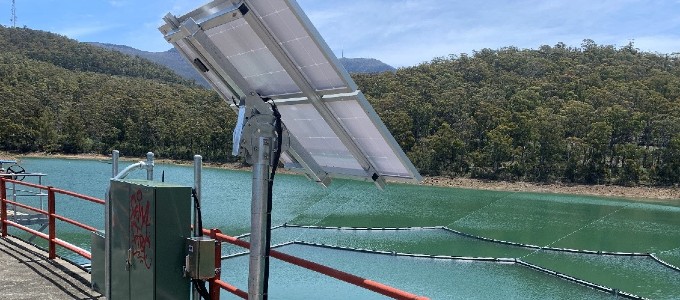TasWater – Dam Safety Monitoring

Client: TasWater
Location: Tasmania
Date: 2017 - ongoing
Delivering an end-to-end upgrade of dam safety monitoring equipment at water storage reservoirs across Tasmania
Background
Maintaining the safety of aging dam infrastructure is a challenge facing many sectors, particularly mining, hydropower and water utilities. It is vital for dam owners and operators to monitor the condition and safety of their assets in order to prevent dam failure, which could have potentially damaging impacts on communities, resources and asset infrastructure. Having a complete and accurate data archive that tracks parameters such as structural movements, internal pore pressure and leakage, permits engineers and asset managers to quickly respond to changes and improve maintenance strategies.
As part of TasWater's dam safety program, Entura was engaged to review, design, supply and install upgraded dam safety monitoring solutions that align with current safety standards at 15 TasWater water storage sites across Tasmania.
Solution
Entura first conducted a thorough assessment of existing instrumentation, recommending upgrades and developing detailed designs that align with the ANCOLD 2003 dam safety instrumentation guidelines. We then carried out an end-to-end process of designing, supplying, configuring and installing data collection and telemetry technologies.
Integration with existing infrastructure and in-progress dam upgrade works requires adaptable solutions, designed and built in-house to maintain efficiency and quality control. Some dam sites also have unique heritage restrictions, requiring creative design work for the equipment installations and civil works to be carried out.
We have been thorough in our delivery of the project, conducting and validating desktop radio path analyses in the field to ensure that all communication paths are optimised to meet client standards. This process helps to improve design efficiency by eliminating the need for field studies, which can be costly and time-consuming.
Our team has also designed on- and off-grid power solutions to meet the unique environmental limitations at each site, calculating accurate solar and battery bank sizes to allow for adequate redundancies.
Safety is always a key concern throughout the installation phase, with each site posing a set of hazards to be addressed and minimised, such as working at heights on dam crests, and working on and around water. Risk assessments have been carefully conducted prior to the installation of equipment and appropriate control measures put in place to mitigate any risks, including the use of life jackets and fall restraint systems and applying minimum approach distances.
Entura has also performed and recorded thorough Inspection and Test Plan (ITP) processes on the sites prior to commissioning and handover to TasWater, to ensure fit-for-purpose solutions.
Highlighting our current Dam Safety 5-year Program
The 5-yearly dam safety surveillance program consists of undertaking/preparing:
- 118 intermediate inspections and reporting
- 41 comprehensive surveillance reviews and reporting
- 139 dam deformation surveys and reporting on 45 dams
- 20 quarterly piezometer readings and reporting for 9 dams
- 22 new operation and maintenance manuals
- 27 reviews and updates to existing operation and maintenance manuals
- 22 new dam safety emergency management plans
- 166 reviews and updates to existing dam safety emergency management plans
- miscellaneous dam safety advice as requested by TasWater
- annual dam safety emergency retainer service.
Outcome
Entura’s experienced remote monitoring and water management team continue to deliver a robust and reliable dam surveillance system that will acquire accurate data for many years to come. The team has worked closely with TasWater to ensure the commissioning process is seamless, reducing system downtime for internal stakeholders.
The instrumentation upgrades bring dam assets in line with ANCOLD guidelines, minimising the requirement for onsite inspections and freeing up valuable personnel resources – all while supporting the ongoing safety of Tasmanian communities and the natural environment.




